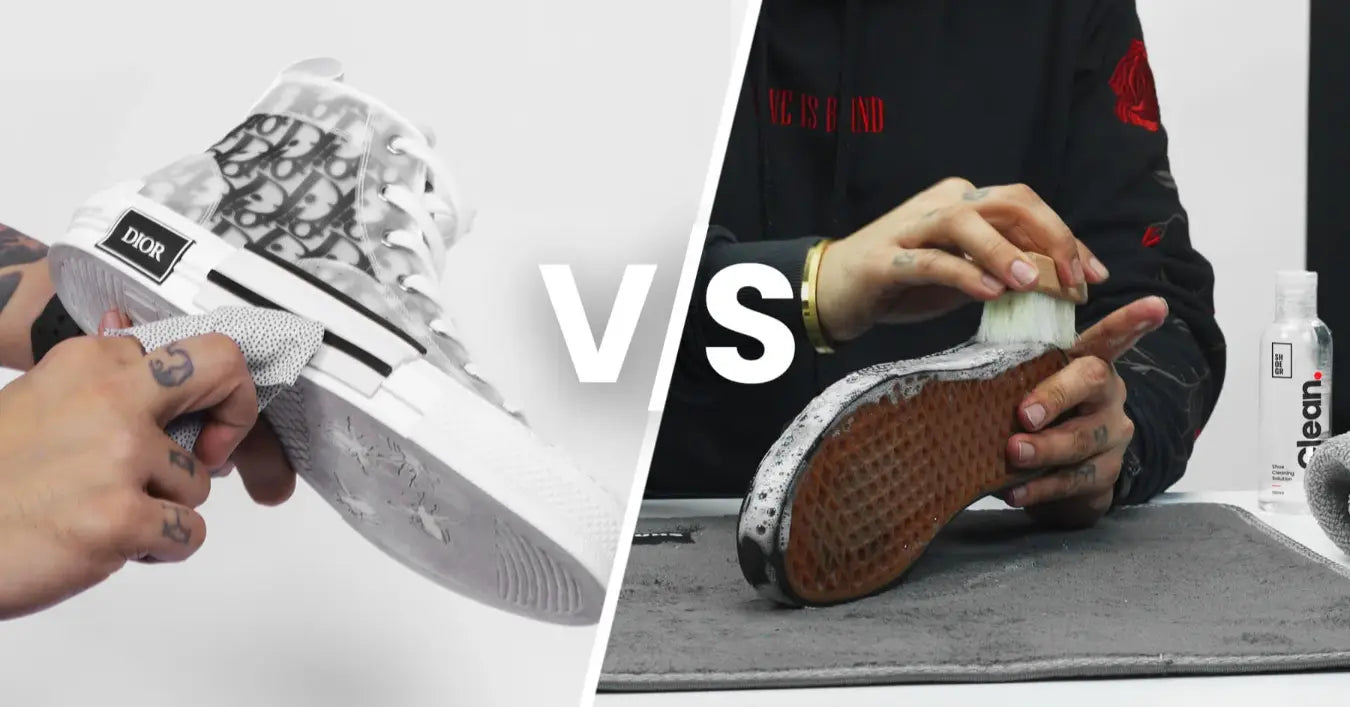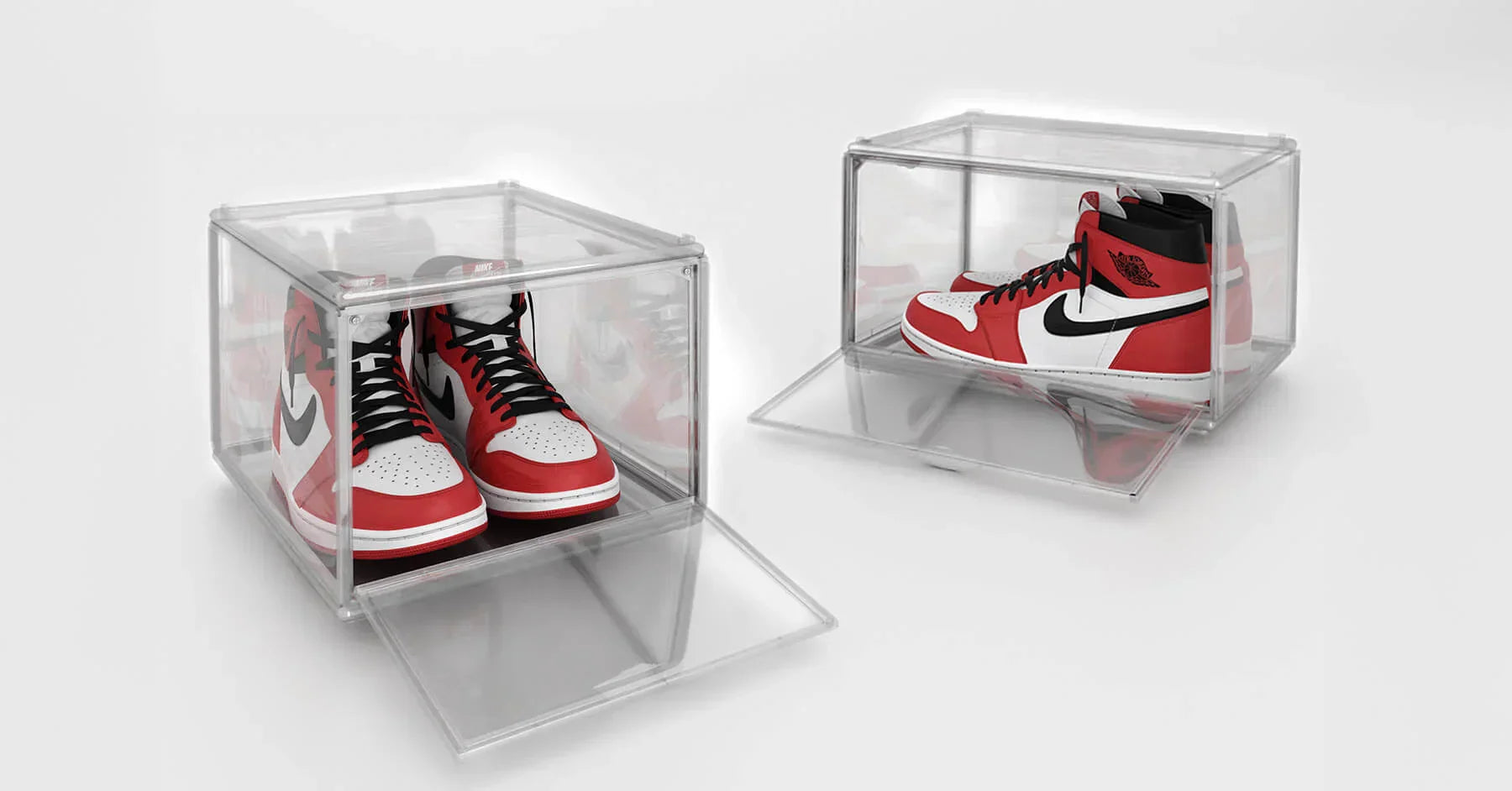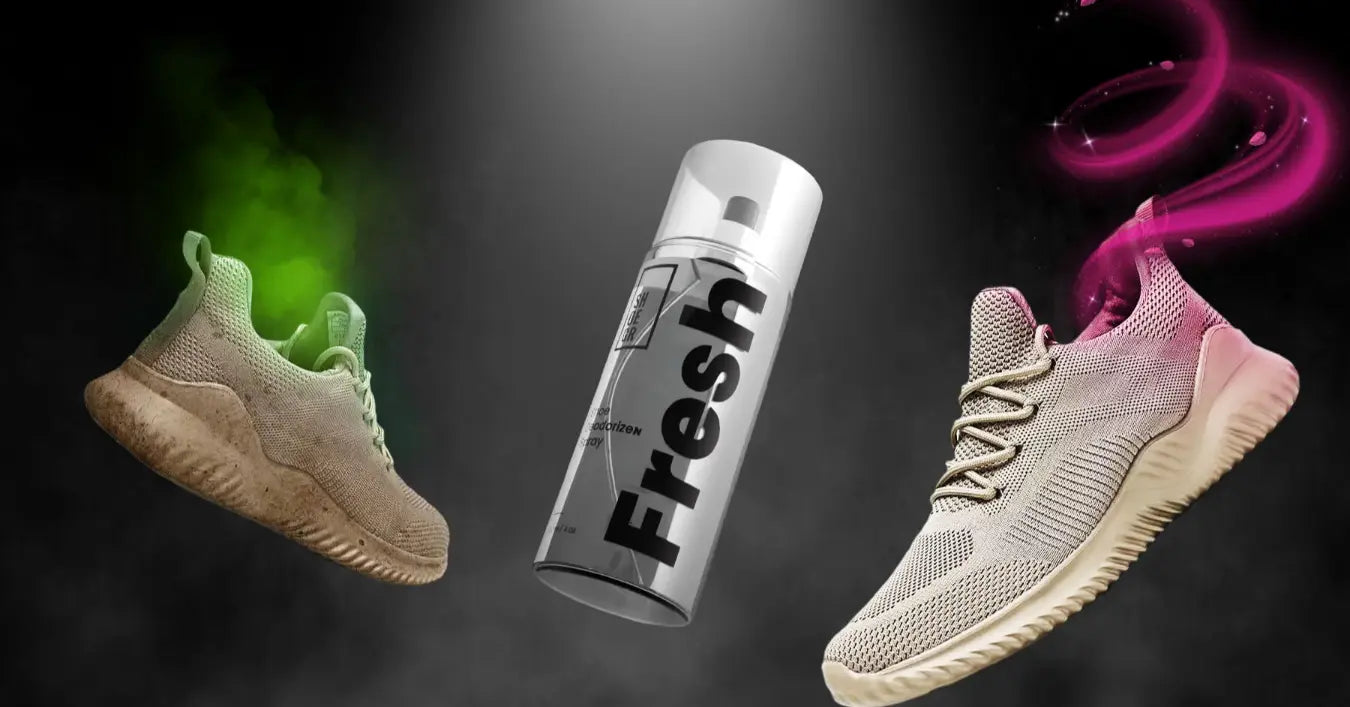
Dry Cleaning Shoes vs. Wet Cleaning Shoes: Which is better?
Keeping your shoes clean is important for their longevity, appearance, and hygiene and when it comes to cleaning, you have two main options: dry cleaning and wet cleaning. Each method has its own benefits and is suitable for different types of shoes and stains.
In this guide, we’ll explain the difference between dry and wet shoe cleaning, when to use each method, and the best products to get the job done.
Understanding shoe dry cleaning and wet cleaning
1. Dry cleaning shoes:
Dry cleaning of shoes refers to a cleaning process that does not involve exposing the shoes to water or any solutions. Instead, it uses specialized tools and techniques to remove dirt, stains, and odors while preserving the shoe's material and structure. It is a quick and convenient way to clean shoes that don’t require deep cleaning.
When to use dry shoe cleaning?
-
When shoes have dust, dry mud, or mild stains.
-
When you need a quick refresh without washing.
-
For maintaining shoes in between deep cleanings.
What’s required for dry cleaning?
-
Use suitable brushes for uppers, midsoles and outsoles - Gently remove dirt and dust using a shoe cleaning brush. Use soft, medium or hard brushes depending on the shoe material. These are perfect for removing loose dirt, dust, and debris without water or solution.
-
Shoe cleaning wipes - Perfect for quick touch-ups, shoe cleaning wipes can remove light stains and freshen up your shoes instantly.
-
Suede/nubuck eraser - For suede and nubuck shoes, a suede shoes cleaning kit is an effective way to remove small stains and scuffs without damaging the fabric.
-
Microfiber cloth - A dy microfiber cloth is perfect for wiping shoes after brushing to pick up any remaining dust or debris.
Pros and cons of shoe dry cleaning
Pros:
-
Quick and convenient for daily maintenance.
-
Prevents water damage and keeps delicate materials like suede safe.
-
Great for light stains and surface dirt.
Cons:
-
May not remove deep stains or bad odours completely.
-
Requires regular cleaning to maintain results.
2. Wet cleaning shoes:
Wet cleaning is a shoe cleaning method that involves using water, cleaning solutions, and brushes to remove dirt, stains, and odors. This method is more effective for deep cleaning and tackling stubborn grime that dry cleaning alone may not handle.
When to use wet shoe cleaning?
✅ For heavily soiled shoes with deep stains.
✅ For shoes made from materials that can handle moisture, such as mesh, canvas, rubber, or synthetic leather.
✅ Ideal for restoring shoes after outdoor activities, sports, or muddy conditions.
Best methods for wet cleaning shoes
-
Hand cleaning - For delicate shoes, use a cleaning solution, water and a soft brush to gently clean the surface without damaging the material.
-
Machine washing (with care!) - Certain sneakers can be cleaned in a washing machine using a shoe washer bag and shoe laundry pods. However, always check the manufacturer's instructions before proceeding, to avoid damage.
-
Air drying properly - After wet cleaning, always let your shoes air dry completely before wearing. This prevents moisture buildup and bad odours.
Pros and cons of shoe wet cleaning
Pros:
-
Effective for deep cleaning and tough stains.
-
Deep cleans stubborn stains and grime.
-
Restores the original look of heavily soiled shoes.
-
Ideal for everyday sneakers and sports shoes.
Cons:
-
Risk of water damage, color fading, or material shrinking.
-
It takes longer to dry.
Materials to avoid wet cleaning:
Suede – Avoid wet cleaning too often. Excess water can ruin the texture. For regular cleaning stick to dry cleaning methods with a soft brush, suede brush, and suede eraser. Use wet cleaning only when the shoes are heavily soiled and really need a deep clean. While wet cleaning, avoid using excess water.
Nubuck – Excess moisture may cause discoloration or stiffness. So, be careful and always strain the brush of excess water while wet cleaning.
Premium leather – Use minimal water and rely more on conditioners and wipes.
Which cleaning method is best?
The choice between dry and wet shoe cleaning depends on your shoe type and how dirty they are. Dry cleaning is recommended for regular maintenance, shoes made of materials like suede and nubuck, and when you are short on time. Wet cleaning is ideal for deep cleaning, removing hard stains, once every few weeks for regularly worn shoes, and shoes that are worn often.
Final thoughts
Both dry and wet shoe cleaning are essential to keeping your shoes in top condition. Dry cleaning helps maintain your shoes on a day to day basis, especially for the suede and premium leather shoes, while wet cleaning is best for deep cleaning and removing tough stains.
For the best results, use SHOEGR’s shoe cleaning kit, shoe wipes, and sneaker fresheners to keep your shoes looking fresh and clean!


